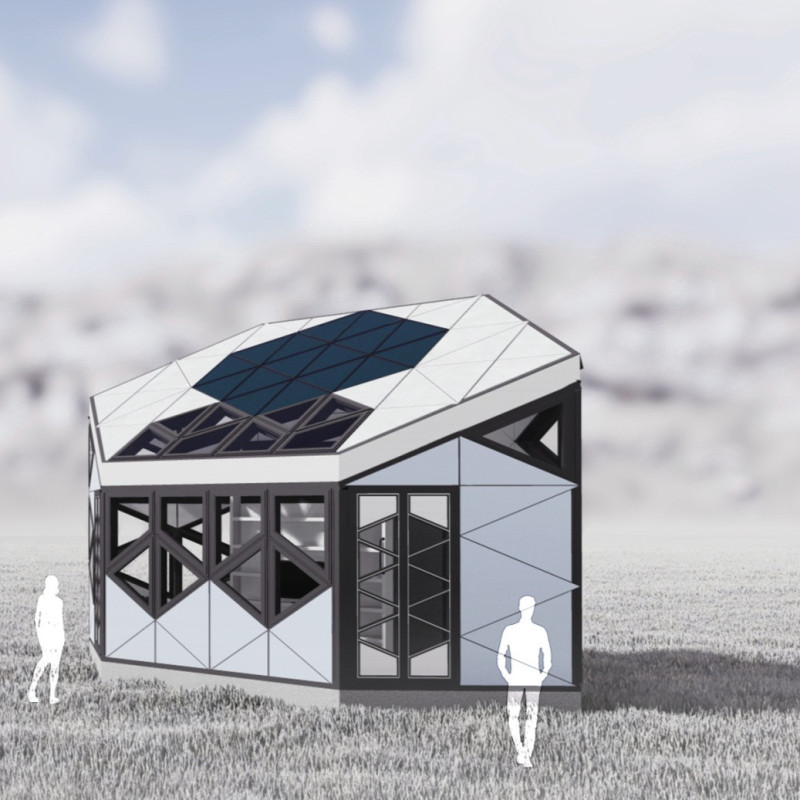5 key facts about this project
The GeomeTRIum microhouse project offers a thoughtful response to the ongoing challenge of housing shortages, providing an efficient and compact living solution. Designed to accommodate up to three people, the microhouse features an innovative hexagonal shape that maximizes interior space. Positioned in urban areas where land is scarce, it aims to provide a functional and cohesive living environment without the limitations of traditional design.
Structural Design
At the core of the microhouse is a prefabricated frame, available in wooden or metal options. This structural design emphasizes both strength and lightness, allowing for easy assembly and flexibility. Triangular elements within the design enhance the building's stability and performance, particularly against strong winds, ensuring a safe home for its occupants.
Sustainability Features
The project takes a sustainable approach by utilizing harmless materials sourced from recycled waste. This commitment to eco-friendly practices reduces the environmental impact of construction. The roof is equipped with solar panels, providing renewable energy to the microhouse and promoting a self-sufficient lifestyle. This focus on sustainability is a response to the growing need for environmentally responsible living solutions.
Interior Configuration
Inside, the layout is designed for multiple uses. There are distinct areas for living, dining, and working, catering to the daily activities of residents. A modular wall system allows for flexibility in the building's layout, facilitating personal customization according to the needs of its users. Features like a folding table optimize the use of space, ensuring that the microhouse remains comfortable and functional.
Natural light floods the interior through large windows that bring the outside in. This thoughtful integration creates a warm, inviting atmosphere while maintaining privacy. The combination of geometric design and strategic layout enhances the living experience, making the microhouse a suitable option for those seeking a modern, yet practical living arrangement.


















































